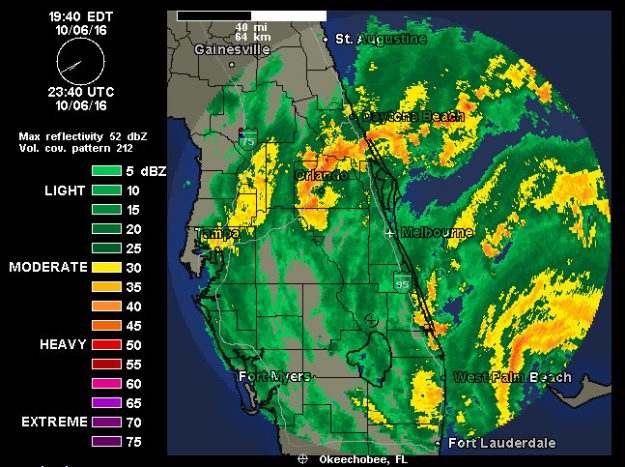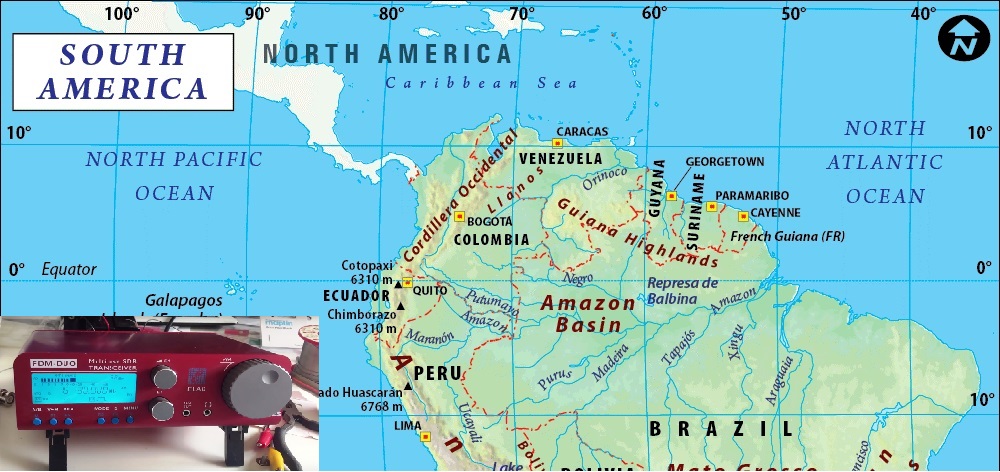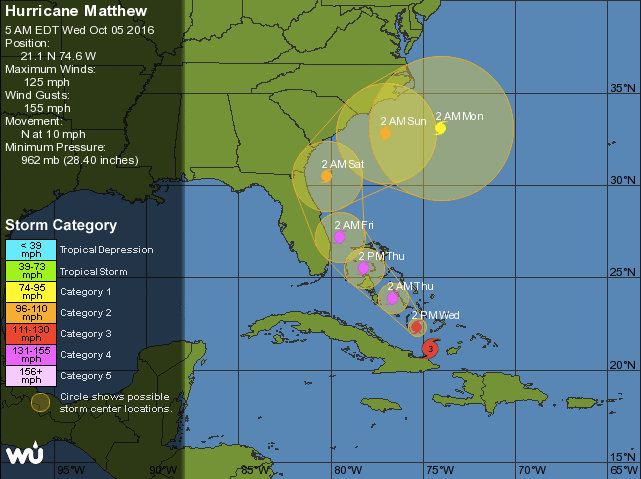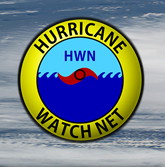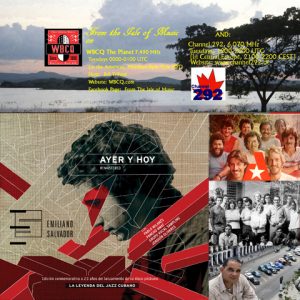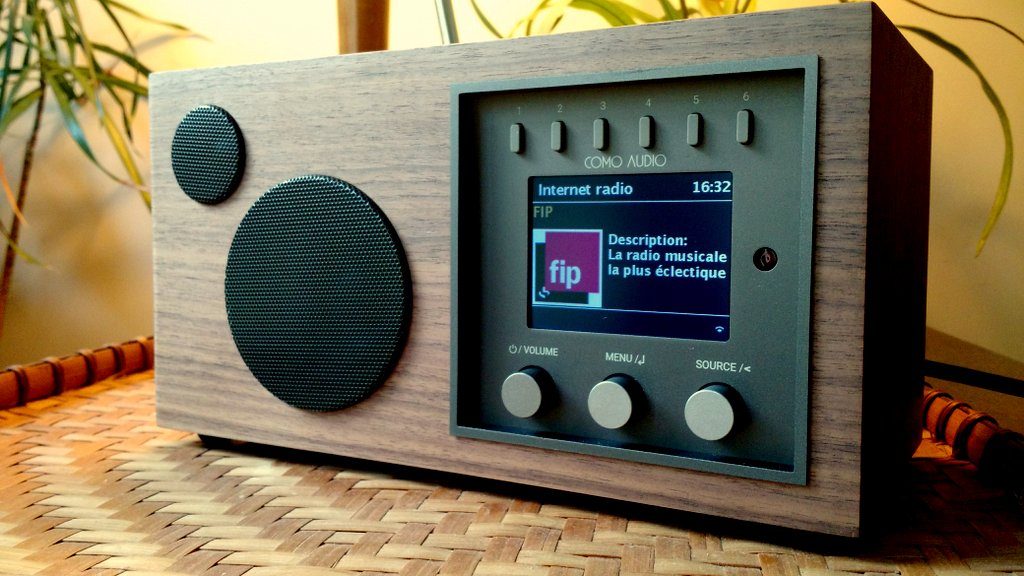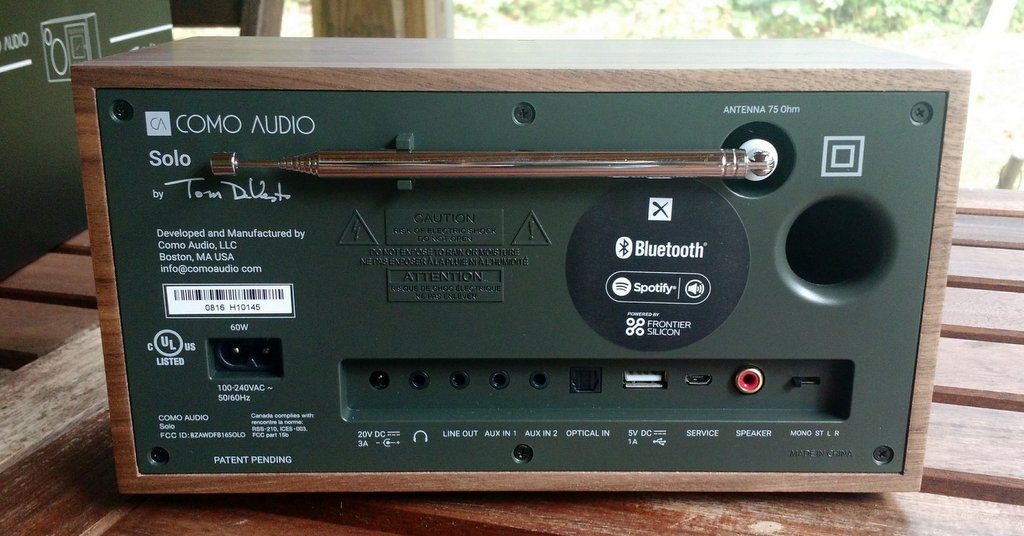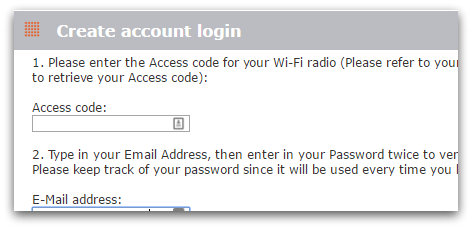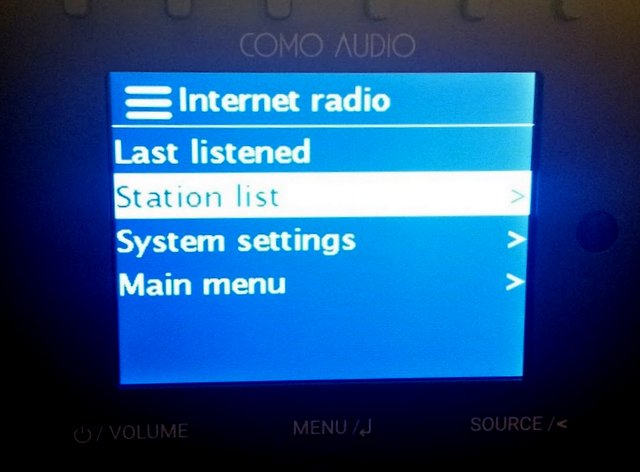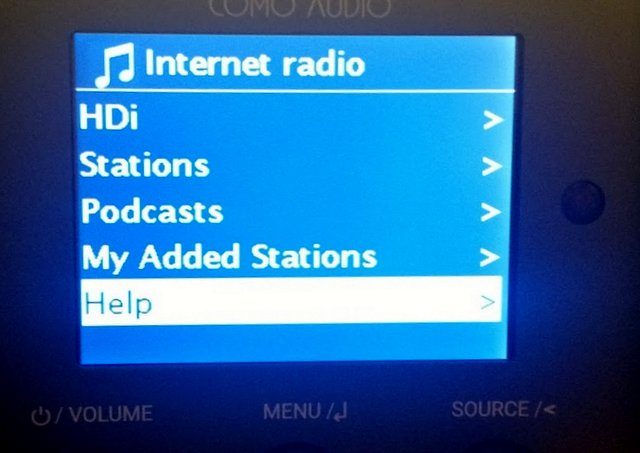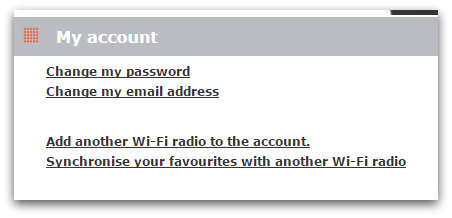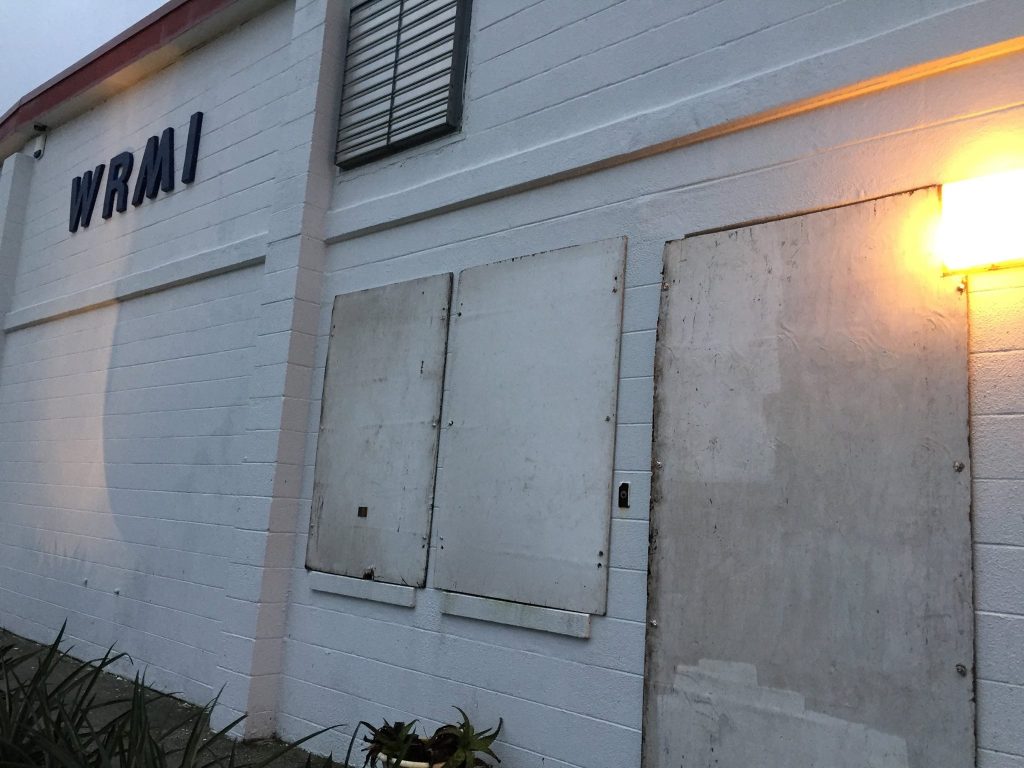 (Source: WRMI at 23:00 UTC, 06 October 2016)
(Source: WRMI at 23:00 UTC, 06 October 2016)
Our windows are boarded up, but we are still on the air here at WRMI as Hurricane Matthew approaches the east coast of Florida at 2300 UTC Thursday, October 6. The worst winds and rain are expected during the next several hours.
Nuestras ventanas estan protegidas por planchas de madera, pero todavia estamos en el aire aqui en WRMI mientras el Huracan Matthew se acerca a la costa este de la Florida a las 2300 UTC el jueves 6 deoctubre. Los vientos y las lluvias mas fuertes se esperan durante las proximas horas.
I’m very happy to hear that WRMI has prepared for this storm and I certainly hope they’re able to stay on the air and have and suffer no storm damage.
Yesterday, WRMI posted the following notice:
To WRMI listeners: As of 1600 UTC Wednesday, October 5, Hurricane Matthew appears to have a path which will take the center of the Category 4 storm very near Okeechobee. We will have extremely strong winds and rain during the next few days, and there is the possibility of the loss of electrical power and/or Internet service. We will keep all of WRMI’s transmissions on the air as long as we have electrical power and it is safe to operate. But if you find that we are off the air sometime within the next 48-72 hours, it will be due to the hurricane, and we will attempt to resume regular operations as soon as possible after the hurricane passes and power is restored to our transmitter site. Thank you for your understanding.
I expect WRMI/Okeechobee will have to cope with hurricane force winds tonight. The west wall of the hurricane eye is currently travelling up the eastern Florida coast and is sure to tax the WRMI antenna farm.
Here’s hoping our friends at WRMI make it through unscathed.
Is Hurricane Matthew affecting any SWLing Post readers? Please comment!
UPDATE: (Source: WRMI at 7:45 UTC, 07 October 2016)
As of 0630 UTC Friday, our electricity is out at the WRMI transmitter site in Okeechobee. We are operating on emergency generator power, which powers our lights, air conditioning and computers. However, all transmitters are off the air except 6855 kHz, which remains on the air on extremely low power. Winds are extremely strong here, and we do not have an estimate of when electricity will be restored. The center of Hurricane Matthew is northeast of us now.

